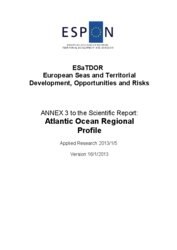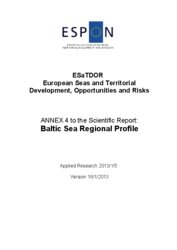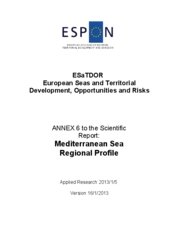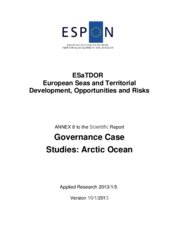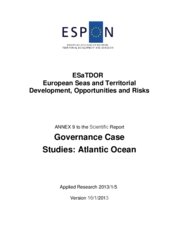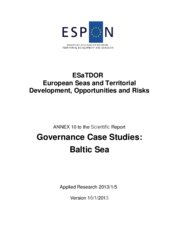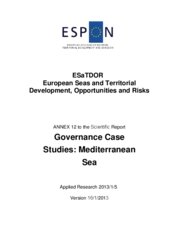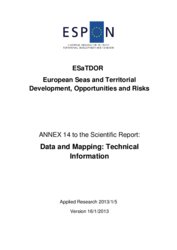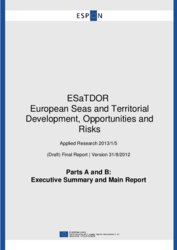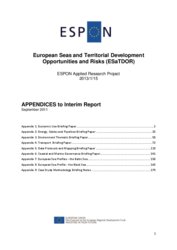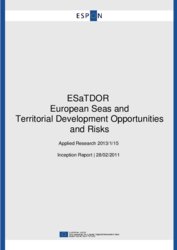ESaTDOR - European Seas and Territorial Development, Opportunities and Risks
Thematic scope
Europe’s seas have become important in terms of policy making on both European and national level. The exploitation of sea and coastal areas for economic purposes is becoming increasingly important but there are also growing concerns on environmental issues.
There have been attempts to replace the existing fragmented approaches to sea management with a more collaborative integrative approach on the European level. In this vein the Blue Book on an Integrated Maritime Policy (IMP) has been presented by the European Commission.It is crucial for IMP to respect the different geographical, socio-economic, cultural and political conditions of each of Europe’s maritime areas. For instance the Mediterranean Sea, the Baltic Sea and the Black Sea regions all face different types of challenges but also have different development opportunities and potentials. Within the IMP context emphasis is laid on maritime transport, which has been a catalyst of economic development and prosperity throughout Europe’s history and today European seaports function as gateway regions within the global economy.
Please read more about the main research areas and main results envisaged on the next page.
Lead Partner
University of Liverpool, UK
Detailed information on the contracted project team can be found under Transnational Project Groups.
Sounding Board
Wiktor Szydarowski (Sweden)
Marko Peterlin (Slovenia)
Budget: € 799 716.00
Project’s lifetime: September 2010 – September 2013
Delivery of Reports
Inception Report: 1 March 2011
Interim Report: 1 September 2011
Draft Final Report: 1 September 2012
Final Report: 16 January 2013
Publishing
Reports will be published once they are approved by the ESPON Monitoring Committee
More information
Please contact the Project Expert at the ESPON Coordination Unit:
Michaela GENSHEIMER, e-mail: michaela.gensheimer@espon.eu
Main research areas
- Investigation of current uses of Europe’s seas through mapping current sea use patterns, typologies, dynamics and inter-linkages.
- Identification of patterns of sea use and of types of coastal regions: investigating the present state of European sea areas, identifying potential areas of conflict between the use of sea areas and their deterioration, distinguishing different types of coastal regions, studying employment patterns in sea areas and evaluating the present state of maritime clusters.
- Analysis and identification of development opportunities in the respective areas, also taking into account issues regarding sustainability and climate change.
- Analysis of the relationship between terrestrial and maritime planning seeking optimal practices for maritime governance
Main results envisaged
- Data input to the ESPON database
- Indicators offering information on coastal areas and their development opportunities, socio-economic situation as well as level of competitiveness.
- Typologies of different patterns of sea use and of coastal areas classified by territorial evidence based characteristics, strengths, weaknesses, potentials and challenges.
- European maps revealing the present state of sea use displaying existing and potential environmental threats, different coastal areas and the current territorial state of their development as well as the territorial potentials and challenges of different European seas and coastal areas.





